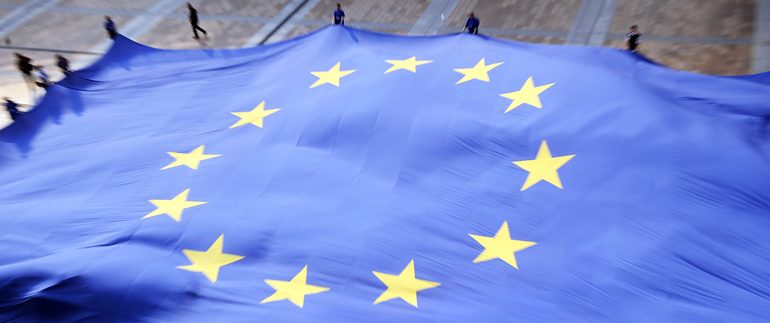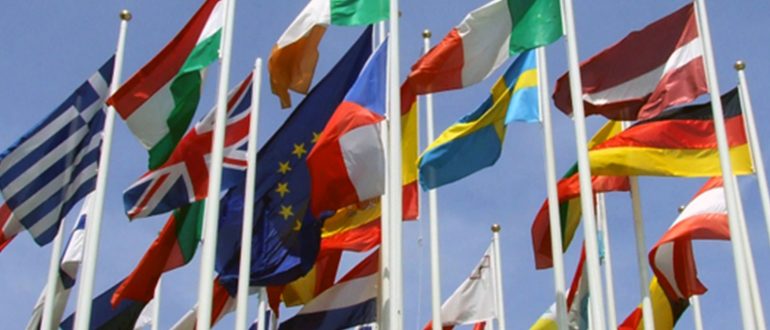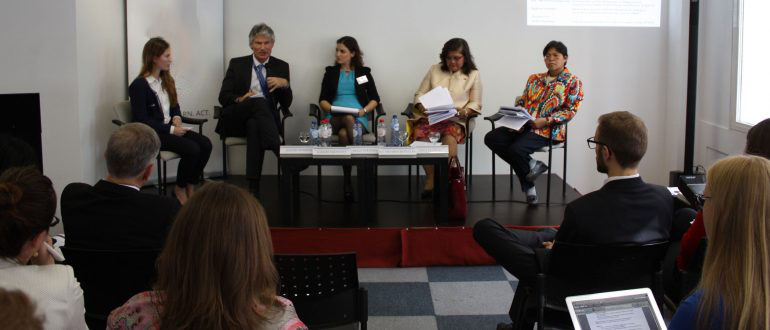Democratization in Burma? – Challenges and Perspectives
What changes happen in Burma? Are these changes a democratization process? Burma’s transformation has been currently discussed by several articles, journalists and professionals. This abstract should give an overview of the historical development and the nature of the current changes. Further it should give a short evaluation showing the perspectives for the country.
1. Introduction
“No country can claim genuine development until all its people can enjoy the basic freedoms, freedom from want and freedom from fear.[…] I would like you to think of Burma, not just as a nation but as peoples – human beings, like all of you.” Aung San Suu Kyi, June 14th 2012, Geneva.
Daw Aung San Suu Kyi addressed the International Labour Conference (ILC) on June 14th, 2012, for the first time since her release from house arrest, which she had been put under by the military regime in Burma for more than 15 years. This, in itself, highlights Burma’s development towards democratization. Finally it seems like the time has come that Burma is changing.
This has already been recognized by several countries who, as a result of the democratization, suspended their sanctions against Burma. Also, the ILC recognized the changes happening, especially in regard to the use of forced labour.
The fact that there is some transformation cannot be denied. However, cautious optimism is what Aung San Suu Kyi calls for. Especially in light of the recent riots in the region of Rakhine and the alleged arrests of students because they were planning a demonstration, this cautiousness should be emphasized. On the basis that there are changes the nature of these changes should be analyzed more closely.
The following provides an overview of the historical developments in Burma, especially with regard to the use of forced labour and the responses by the international community in order to get closer to the roots of the current situation.
2. Background
In the colonial days, Burma and its economy were under British control. One of the most important goals since then was – and still is – to get the economy back under Burmese sovereignty.
With a coup the military regime took over in 1962. This ended the short period of civilian government after Burma was given its independence from Great Britainin 1948. Up until then, the military controlled the government in Burma directly or indirectly. Back then, some citizens recognized the direct military takeover as a positive step as the military was considered effective and not as corrupt as other politicians. Under this regime, however,Burma became one of the world’s most impoverished countries.
In order to get control over the economy, the military under General Ne Win nationalized most industries and declared the land as property of the state. Although not being a communist system, the major control of the economy was in the hands of the military. In 1987 Burma faced a major economic crisis and subsequent cautious economic reforms, the government gave up its socialist program and instead changed legislation by e.g. enacting an investor-friendly investment law. Still, protests and pro-democratic demonstrations increased and were brutally halted by the military regime. All of this cumulated in the coup of September 1988.
Even though steps like the investment law change were taken, certain countries, like the United States, decided to stop providing economic assistance as a result of the coup. Free elections were held in 1990 and provided a short window of hope for the popular movement in the country. The National League of Democracy (NLD) won 392 out of 489 seats, but the military junta was not willing to give up power and the military regime continued. Following these events economic and natural disasters fueled the anti military demonstrations. The military regime blocked the country from all outside influence and no help from the international community was allowed to enter.
One example of the military suppression in the country concerns forced labour, which became a widespread phenomenon in the 1990s: Subsequently, a complaint was filed in 1996 at the International Labour Organization (ILO) to establish a Commission of Inquiry (CoI). Its task was to examine the observance by Burma of the Forced Labour Convention of 1930 (Convention No. 29 of the ILO). The CoI concluded that Burma was not in compliance with the convention and that forced labour was indeed a problem. With this, the CoI made three recommendations: First, the legal texts had to be brought in line with the Convention on Forced Labour. Second, concrete actions for the elimination of forced labour had to be taken. And third, the penalties for the exaction of forced labour had to be enforced. AsBurmatook no reasonable steps to comply with the recommendations, two resolutions where adopted by the ILC in 1999 and 2000. Those resolutions stipulated sanctions concerning the assistance and cooperation by the ILO. More than that, these resolutions served as the basis for several economic sanctions taken by different states. What makes the ILO unique is that its decisions do not only reflect the views of governments, but also those of the workers and employers groups that constitute the other parties within its tripartite structure. The observation mechanism, observing the compliance of the member states with the ILO conventions, is based on the principle that the social partners decide over the cases of compliance that need further attention. With this the observation mechanisms are objective and not based on political or regional interests of governments.
After a period of relative little change, the basis for the current developments was a constitutional referendum, held in 2008, in order to establish a “discipline-flourishing democracy” (this principle can still be found in Art. 6 (d) of the constitution of 2008). Although this referendum was controversially discussed, it set the starting point for what could be a turning point towards democratization in Myanmar.
3. The Changing Burma
During the last two years and especially since April 2012, a lot has changed in Burma. Free elections under the new constitution were held in 2010. The Union Solidarity and Development Party (USDP), the military-backed party, won the elections, in which the NLD did not even participate. Instead, and even more remarkably, it is the military-backed USDP that embarked several reforms since 2010. New labour standards have been established as well as a Human Rights Commission. Also, Aung San Suu Kyi was released from house arrest. On May 1st, 2012, known as May Day (Workers’ Day), the president Thein Sein addressed the nation stating his commitment to eliminate all forms of forced labour by December 2015.
These changes, significant as they are, have been the basis of the positive responses of the international community.
As part of these international responses also the ILO gave credit to the changes by partly lifting the resolution 1999 during the 101st session of the International Labour Conference (ILC) in June 2012. The resolution 2000 has been suspended for one year. However, workers and employers during the ILC highlighted the need for further development. They emphasized that forced labour still exists in Burma and the goal to eliminate it should be met even before December 2015. Notice should be given to the fact that Burma was disappointed by this decision of the ILC as it expected both resolutions to be lifted. Still, it agreed to meet the goal of eliminating forced labour before December 2015 and stressed that it will further advance the democratization process. In order to meet this goal an action plan has been developed in cooperation between the government and the ILO which gives precise instructions and guidelines.
But what is the intention of the government promoting these developments? To get a better picture of the changes in Burma, its motivation should be considered more closely. One of the major objectives is to overcome the isolation of Burma and to establish balanced relations between the country and the outside world. Part of this is the promotion of foreign investment. Addressing the Conference, Suu Kyi also asked for socially responsible investments to strengthen not only the economy but the democracy.
In contrast to this, the government still declines help from outside the country when it comes to humanitarian aid. The recent ethnic based riots in Rakhine are a good example. The government insists that it has control over the problem and that support from Asian states such as Malaysia is not necessary. Where on the one hand, the government liberalizes the economy in order to strengthen investment, it still restricts the access for humanitarian aid into the country.
With this, it should not be forgotten who initiated the changes in Burma. Although there were post-elections held on April 1st, 2012, where the NLD won 43 out of 45 seats and Aung San Suu Kyi was elected a member of parliament, the constitution does not provide for free elections for all the seats available in the Pyithu Hluttaw, the parliament. Art. 109 of the constitution states that 110 representatives out of 440 are nominated by the commander in chief. Far more important, under the constitution of 2008 the military has a veto power concerning substantive decisions on state policy.
4. Conclusions
The changes in Burma are visible. The most important part seems to be the intention of the government to open the economy. This, however, appears to be a liberalization process rather than a democratization. Although elections have been held, there is still no proper rule of law established. The military still has a great influence not only in politics but also on the economy.
Nevertheless, one can always demand even more progress and one should. Valuing the changes is, however, necessary to free Burma from its isolation. What is important is not to forget the goal that is to give freedom, in all its variations, to the people in Burma. It is the people that should be the focus of further aid. This demands for both responsible investment as well as humanitarian aid.
“I would like you to think of Burma, not just as a nation but as peoples – human beings, like all of you. We are not just a family of nations, we are a family of people.” Aung San Suu Kyi, 14th June, Geneva.
By Carola Göhlich
Carola Göhlich studies law at the University of Hannover. She just spent one year in Switzerland and is currently on an internship at the German Permanent Mission to the United Nations in Geneva. In this context she had the opportunity to attend the International Labour Conference as part of the German Delegation.
Bibliography
Aung San Suu Kyi, 2012. The Statement of Aung San Suu Kyi at the 101st International Labour Conference, Geneva, 14.06.2012. [html] Available at <http://www.ilo.org/global/about-the-ilo/press-and-media-centre/statements-and-speeches/WCMS_183369/lang–en/index.htm> [Accessed 09-07-2012].
ILO, 1930. The Forced Labour Convention, 1930 (No. 29) of the ILO, Geneva, 14th ILC session (28 Jun 1930). [html] Available at <http://www.ilo.org/dyn/normlex/en/f?p=NORMLEXPUB:12100:4052198498523622::NO:12100:P12100_INSTRUMENT_ID:312174:NO> [Accessed 09-07-2012].
ILO, 2012a. Report of the Committee on the Application of Standards of the 101st ILC concerning the question of the observance by the Government of Myanmar of the Forced Labour Convention, 1930 (No.29), Provisional Record, 101st Session, Geneva, May–June 2012, 19, Part Three. [pdf] Available at <http://www.ilo.org/wcmsp5/groups/public/—ed_norm/—relconf/documents/meetingdocument/wcms_183283.pdf> [Accessed 09-07-2012].
ILO, 2012b. Developments concerning the question of the observance by the Government of Myanmar of the Forced Labour Convention, 1930 (No. 29), Document of the Governing Body (GB.313/INS/6), 313th Session, Geneva, 15–30 March 2012. [pdf] Available at <http://www.ilo.org/wcmsp5/groups/public/—ed_norm/—relconf/documents/meetingdocument/wcms_175710.pdf> [Accessed 09-07-2012].
Rotberg, R. I., 1998. Burma, Prospects for a Democratic Future. Washington: The World Peace Foundation.
Steinberg, D., 2010. Burma/Myanmar, What Everyone Needs to Know. New York: Oxford University Press.
The Constitution of the Republic of the Union of Myanmar (2008). [pdf] Available at < http://www.burmalibrary.org/docs5/Myanmar_Constitution-2008-en.pdf> [Accessed 09-07-2012] .



